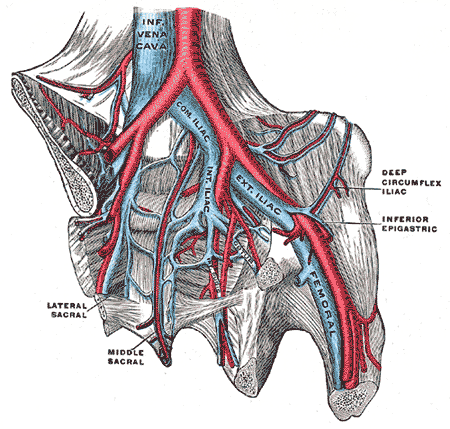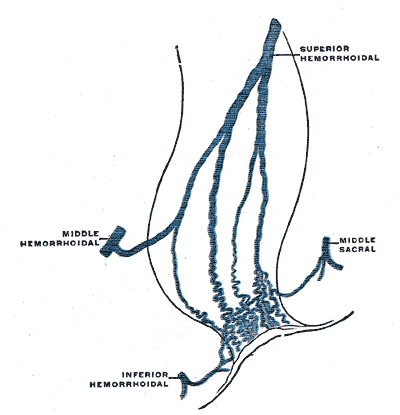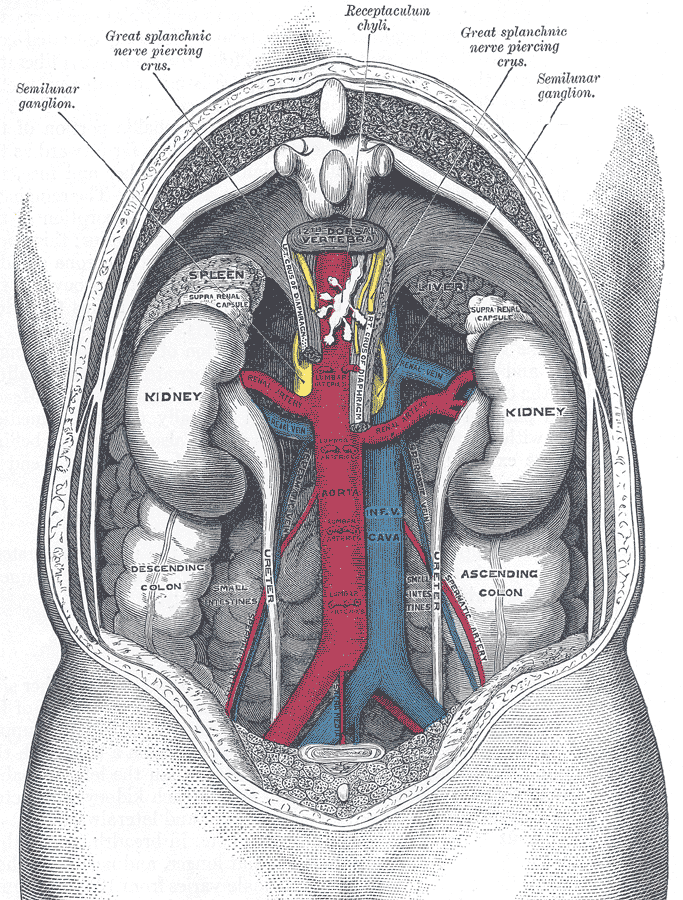Median sacral artery
| Cardiology Network |
 Discuss Median sacral artery further in the WikiDoc Cardiology Network |
| Adult Congenital |
|---|
| Biomarkers |
| Cardiac Rehabilitation |
| Congestive Heart Failure |
| CT Angiography |
| Echocardiography |
| Electrophysiology |
| Cardiology General |
| Genetics |
| Health Economics |
| Hypertension |
| Interventional Cardiology |
| MRI |
| Nuclear Cardiology |
| Peripheral Arterial Disease |
| Prevention |
| Public Policy |
| Pulmonary Embolism |
| Stable Angina |
| Valvular Heart Disease |
| Vascular Medicine |
Editor-In-Chief: C. Michael Gibson, M.S., M.D. [1]
The median sacral artery (or middle sacral artery) is a small vessel, which arises from the back of the aorta, a little above its bifurcation.
It descends in the middle line in front of the fourth and fifth lumbar vertebræ, the sacrum and coccyx, and ends in the glomus coccygeum (coccygeal gland).
From it, minute branches are said to pass to the posterior surface of the rectum.
On the last lumbar vertebra it anastomoses with the lumbar branch of the iliolumbar artery; in front of the sacrum it anastomoses with the lateral sacral arteries, and sends offsets into the anterior sacral foramina.
It is crossed by the left common iliac vein, and is accompanied by a pair of venæ comitantes; these unite to form a single vessel, which opens into the left common iliac vein.
See also
Additional images
-
The iliac veins.
-
Scheme of the anastomosis of the veins of the rectum.
-
The relations of the viscera and large vessels of the abdomen.
External links
- Template:SUNYAnatomyLabs - "Posterior Abdominal Wall: Branches of the Abdominal Aorta"
- Template:NormanAnatomy (Template:NormanAnatomyFig)


